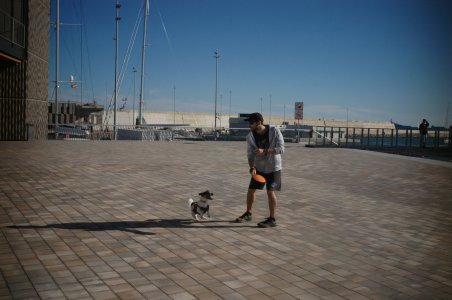Re: vignetting ...
😉 Believe what you see, not what reviews say.
(Oh yes, and to my eye that's fall off, not vignetting ... Vignetting as I was taught an eon ago has a hard edge in it: something in the lens assembly is causing a shadow to be cast on the image. This lens just seems to have substantial fall off, which might vary a good bit from sensor to sensor. It's an oldish lens and was not formulated for the digital sensor, never mind that the Epson R-D1 is an old sensor too which tend to be less forgiving of incident light angles... The optical match between lens and sensor can vary quite a lot.)
Given two lenses, one with pronounced fall off and another with very little, it should be very easy to load the whole lot into an image processing app (Lightroom or whatever), select all the ones that show fall off, and apply one correction to all of them to get them "almost" right. Fully finished rendering is always on a one image at a time basis, far as I'm concerned.
G




